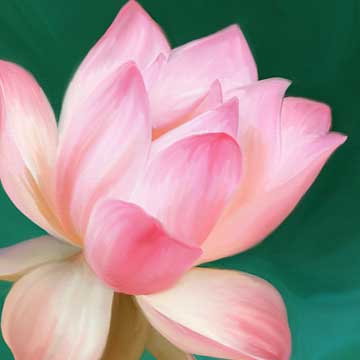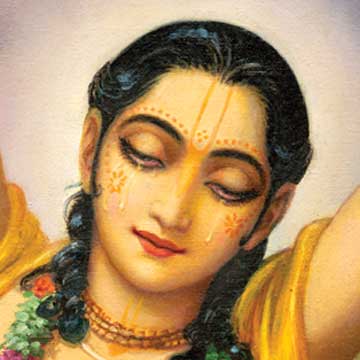For Peace In The Family
- Details

Whatever you do should be to increase your love (priti) for Radha and Krsna. The entire universe has come out from the Lord’s body and we are all His children. Your husbands, children, and wives belong to the Lord. Nothing belongs to you; not even this body. So how can you give donations to others? If you give donations, you will have to come back to this material world to receive the fruits of your karma. Therefore, do not perform karmic activities; change the purpose of your activity.
His Long Arm
- Details

Srila Bhaktivedanta Swami Maharaja was the biggest arm of Srila Prabhupada Bhaktisiddhanta Sarasvati Gosvami Thakura. He was his long arm. He went to Eastern and Western countries, and it was a miracle that in a couple of years he preached everywhere and established so many preaching centers. I think that all who are now becoming devotees and coming to me, are coming because of him...
Meeting by the Ocean
- Details

If one follows us in vaidhi-bhakti, practicing bhakti-yoga in our line, reading Sri Caitanya-caritamrta, Srimad-Bhagavatam and hearing classes on all these subjects, he will automatically come to raganuga. If anyone practices bhakti as Srila Rupa Gosvami explained it in Bhakti-rasamrta-sindhu, he will surely come to raganuga...
The Glory Of The Siksa-Guru
- Details

I am very happy that the whole of Murwillumbah, all devotees have come here. I am very inspired. You are helping me in this preaching in the line of Svamiji. All of you are helping. I am not making disciples, I am making my friends. Making environment that I can tell some Hari-katha to them and they can hear. And Srila Prabhupada Bhaktisiddhanta told: "O you are my 'vipada uddhara bandhu'" What is meaning? You are my friends who save me from a great calamity." Also you are saving me from great calamity. The guru never thinks that I'm making so many disciples...
The Value Of Association With Pure Devotees
- Details

The association of high-class bhaktas is glorified everywhere in Srimad Bhagavatam. Srila Bhaktivinoda Thakura has written the song "Sudha bhakata carana renu, bhajana anukula." What is the meaning of this song? "The dust from the lotus-feet of the high class of Vaisnavas, especialy those in the line of Sri Caitanya Mahaprabhu, and especially in the line of Srila Rupa Gosvami, is very favorable for success in bhajana. Also...
Essence of Srimad-Bhagavatam
- Details

Brahma wanted to see the source of this lotus. He looked up and down, but he could not discover it. He then sat on the lotus and began to think, "What should I do? I don't know what to do."..
TV Interview - Durban, South Africia
- Details
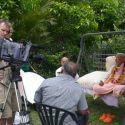
The director of a very popular South African television program, called Dharma Moments, came with his cameraman to the residence of Srila Narayana Gosvami Maharaja to interview him for their program. They first filmed the devotees chanting the maha-mantra...
The Meaning Of Diksa
- Details
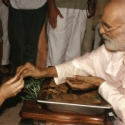
The word initiation actually has come from the word diksa. A qualified, realized guru, who is detached from worldly things-he is really guru. Because he has some realization, he can give diksa. But diksa is not completed in one day or one moment, as it is going on nowadays. Diksa is a class, a course - a process. In one day we cannot be BA, MA, or PHD. It will take some time. There is a regular process...
Vaisnava-ninda, Criticizing a Vaisnava
- Details
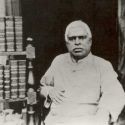
Among all the different types of offences a jiva (living being) can possibly commit, no offence is more severe than blaspheming a Vaisnava. It is therefore essential to contemplate the meaning of vaisnava-ninda according to the scriptures. It is written in the Skanda Purana...
The departure of Srila Narahari Seva-vigraha Prabhu
- Details
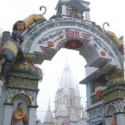
Sri Seva-vigraha Prabhu was one of the foremost disciples and intimate servants of jagad-guru Srila Bhaktisiddhanta Sarasvati Gosvami Prabhupada. Our most worshipful Srila Gurupada-padma had a very close friendship with him; they lived together for a long time and served Sri Dhama Mayapura in countless ways. Srila Prabhupada turned over the entire responsibility for Sri Dhama Mayapura to this dear servant and could then preach suddha-bhakti everywhere with a peaceful mind...
Krishna Is The Only Whole
- Details

Actually He is stealing hearts by His all-enchanting nature. A heart can only belong to someone if he has stolen it. These hearts are taking the forms of different paraphernalia, so that Krishna can 'steal them', and thus have loving exchanges with His devotees...
Krishna, The Supreme Magician
- Details

This is a very wonderful narration of the character of Sri Prahlada Maharaja and Nrsimhadeva. Especially important is Prahlada's statement, "I am not a businessman. At the end all are bound in birth and death. So I want their welfare." Prahlada is a siddha-bhakta. Lord Nrsimhadeva is a plenary part of Bhagavan, but he is not Svayam Bhagavan. Svayam Bhagavan is in Gokula; He is Nanda Baba's lala. He has all kinds of opulence and powers...
The Glories of Gopal Bhatta Gosvami
- Details
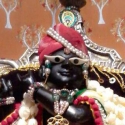
First let us glorify Gopal Bhatta Gosvami. During Caturmasya-vrata Sri Caitanya Mahaprabhu went to South India, to the Ranganathji temple. He began to dance and perform kirtana there, and all were attracted. The members of a very holy family met Him there, and they requested Him, "Please stay at our residence for these four months of Caturmasya, and after that You can go anywhere else...
How To Be Ready For Sannyasa / How Kumbha-Mela Came To Be
- Details
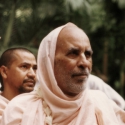
Srila Swami Maharaja told me when he took sannyasa, "I remember the days just after Srila Pradhupada gave me initiation; I chanted with taste and eagerness. Then I saw a sloka: 'If anyone remembers me from the core of his heart, I take away all his possessions, home, and family, and make him a street beggar.'" Still, I had so much taste for chanting, and I continued. After some time my wife left me and my three sons also left...
The Glories of Srimati Gangamata Gosvamini
- Details
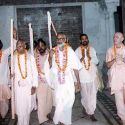
There was a beautiful girl in East Bengal named Saci devi, and she was the daughter of the King of Putiya. From the beginning of her life she heard about Lord Krsna, and from that time onward she gave her entire heart to Him. From the time she was about five years old, she used to worship Krsna, sing to Krsna, play with Krsna, and do everything with Him. When she was about sixteen years old she became maddened for Him...
Makhara-Sankranti
- Details

There are many lines on the earth, like the Equator, the Tropic of Cancer and the Tropic of Capricorn. In the Sanskrit language these lines are called rekhas. In Vedic Astronomy these rekhas are called Bhumadhya-rekha, Karka-rekha, and Makhara-rekha. In its travels, the Sun is always somewhere between these lines. The day on which it comes nearest...
Page 30 of 48


